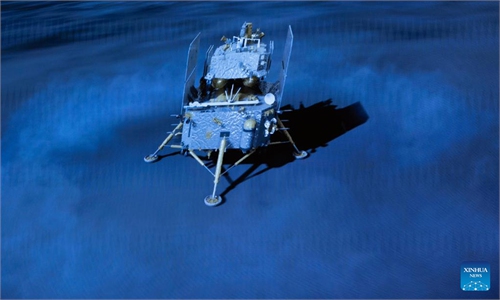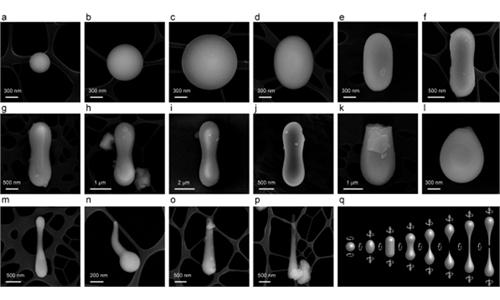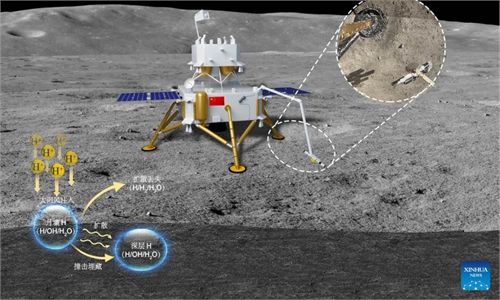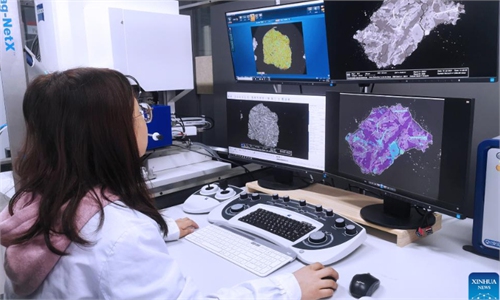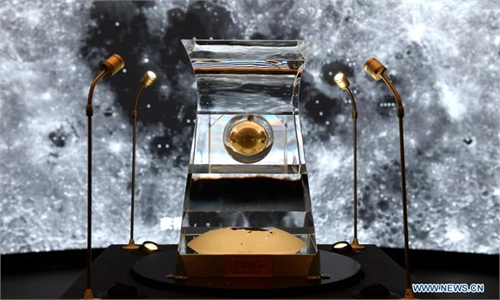More than 70 scientific achievements published on studies of lunar samples brought back by Chang’e-5 probe
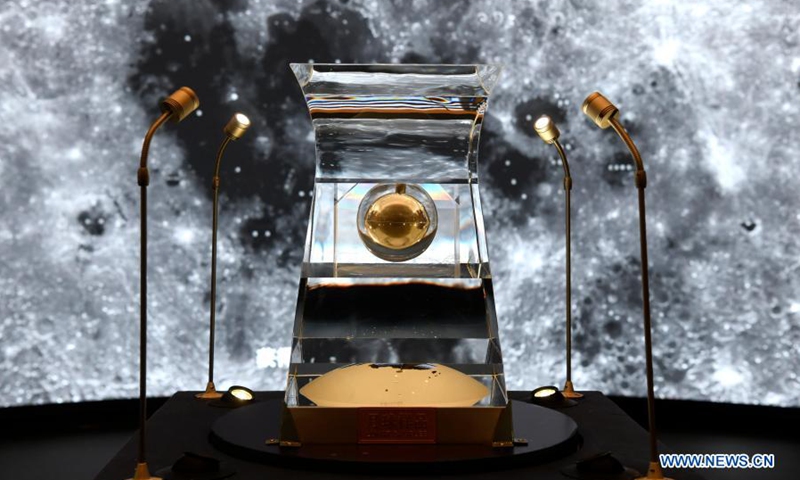
The lunar samples No. 001 brought back by China's Chang'e-5 probe is on display at the National Museum of China in Beijing, on February 27, 2021. Photo: Xinhua
As China’s Chang’e-6 probe touched down on the far side of the moon on Sunday to collect samples from this rarely explored terrain for the first time in human history, researchers studying the lunar samples brought back by Chang’e-5 mission have accomplished a number of milestone achievements with over 70 findings being published in major academic journals both at home and abroad.
According to He Huaiyu, a research fellow from the Institute of Geology and Geophysics, Chinese Academy of Sciences, a total of 1,731 grams of lunar samples were brought back by Chang’e-5 mission in December 2020. These samples were the first ever obtained from a young lunar surface region of volcanic rocks by mankind. They are also the first extraterrestrial celestial bodies’ samples brought back to Earth by Chinese scientists.
After the evaluation conducted by the lunar sample expert committee, the China National Space Administration (CNSA) has completed the distribution of six batches of Chang’e-5 lunar samples. A total of 258 proportions of lunar samples weighing 77.7 grams have been distributed to 114 research teams from 40 research institutions, He said.
Despite the fact that the distributed lunar soil samples account for only 4.5 percent of the total, the fruitful scientific achievements have been made in multiple fields, including lunar formation, evolution, space weathering processes and mechanisms, and the utilization of resources.
To date, more than 70 research scientific findings have been published in prominent domestic and international academic journals such as Science, Nature, and National Science Review, garnering widespread attention and high praise within the academic circle.
Based on researches, Chinese scientific teams reevaluated the end of lunar volcanic activity by approximately 800 million years, determining that these samples of volcanic rock are the youngest lunar samples to be directly dated, at around 2 billion years old.
Chinese scientists also provided new insights into the thermal and chemical evolution of the moon, with studies from these basalts revealing how the composition and water content of the satellite changed over time. The studies may propose new mechanisms for the formation of young volcanoes and models for lunar thermal evolution, providing new directions and insights for future lunar exploration and research.
According to He, researches on Chang’e-5 lunar samples have initially met the demands of China’s deep space exploration and pushed forward the development of lunar and planetary science in China.
Chinese researches have also driven the development of new technologies and reshaped human understanding of lunar evolution, expanding the talent pool for the extraterrestrial sample study, contributed to international cooperation, and attracted broad interest and active participation from researchers in various disciplines such as geology, astronomy, physics, chemistry and biology, He added.
Global Times
